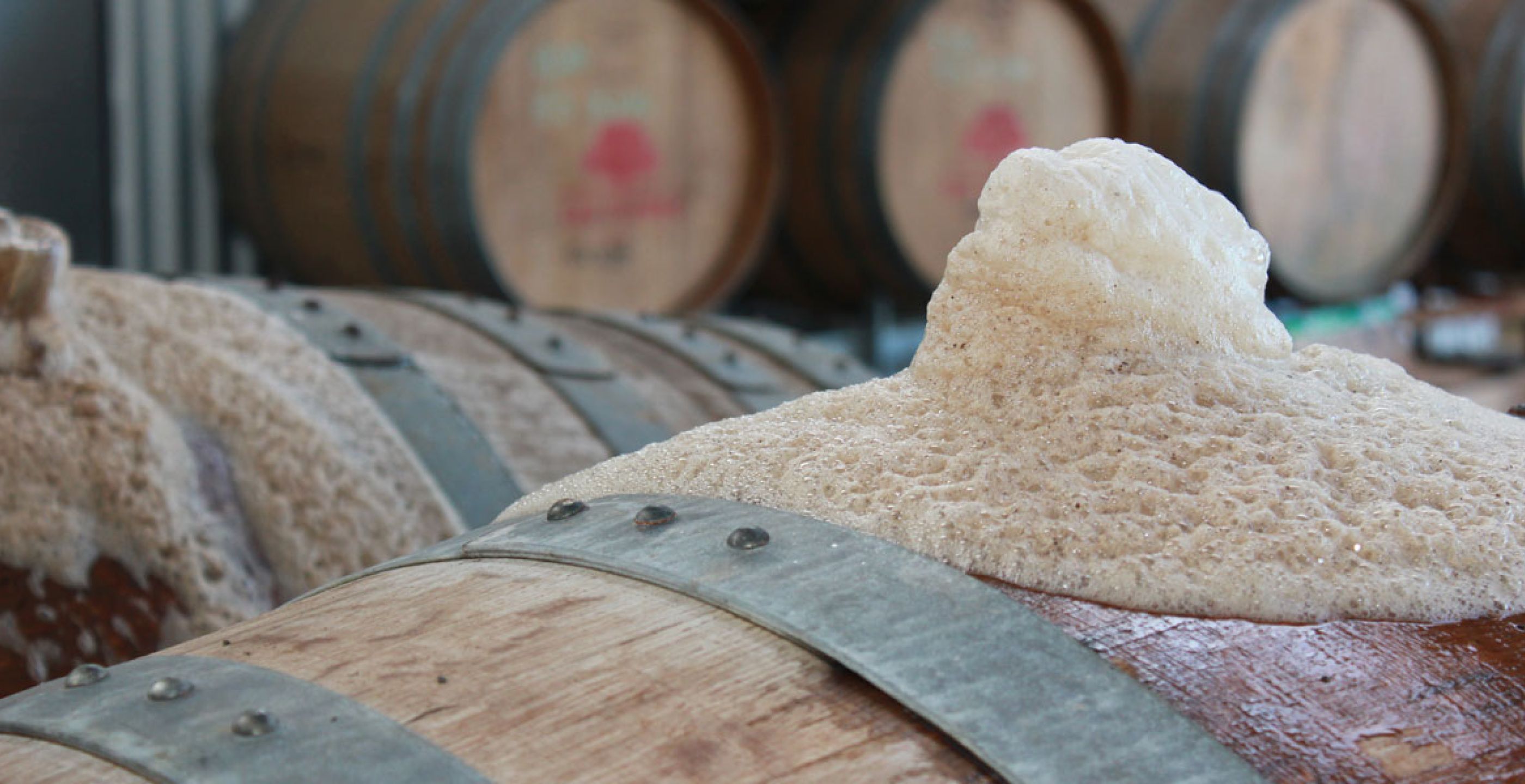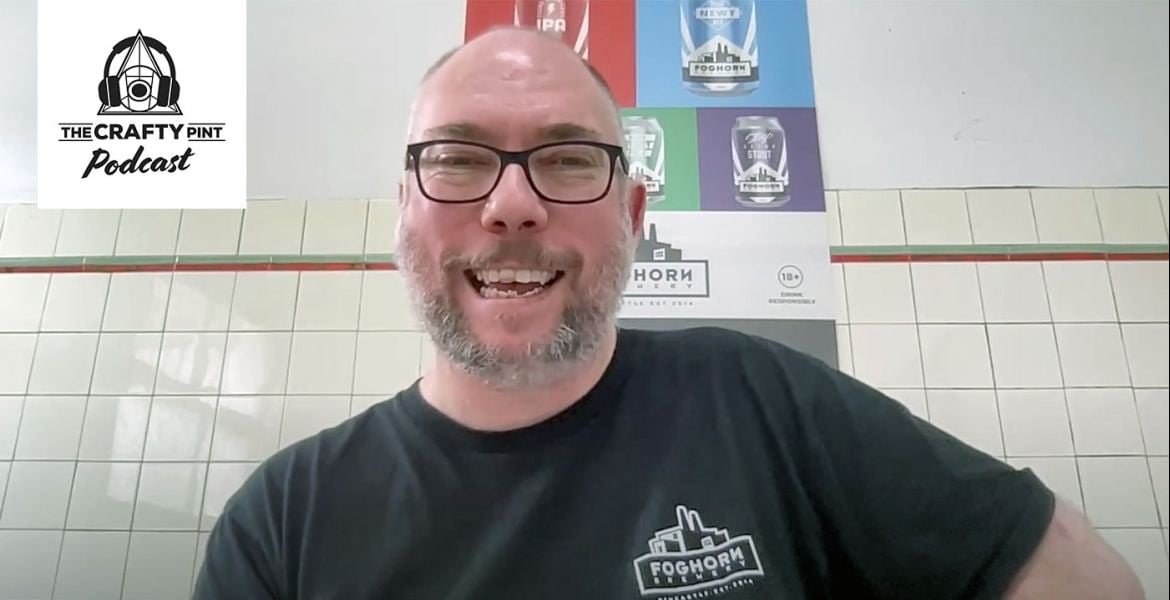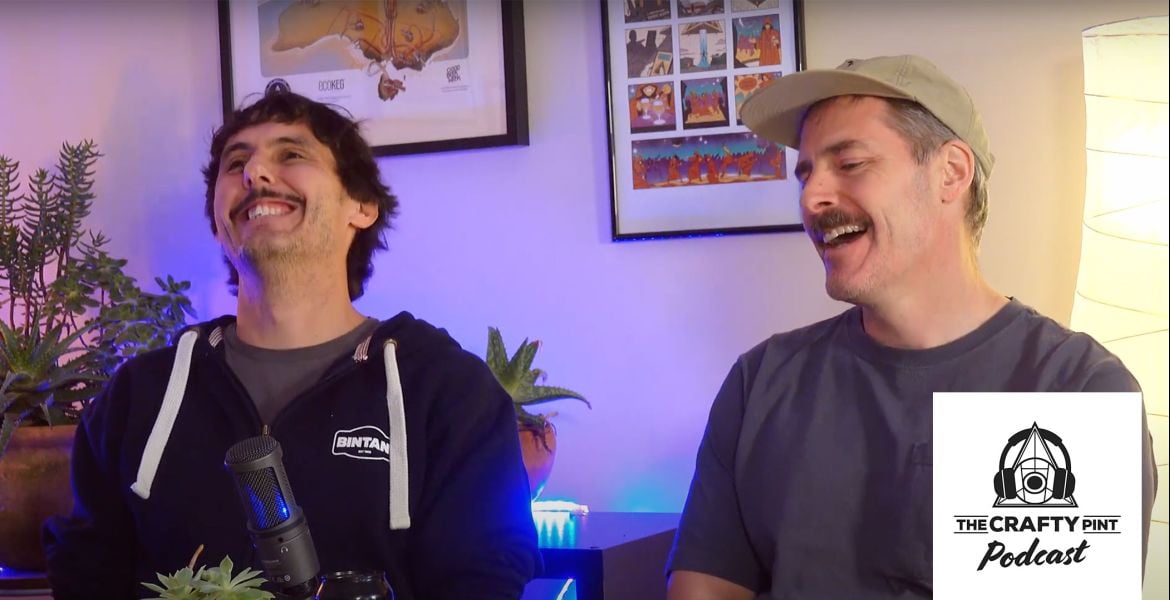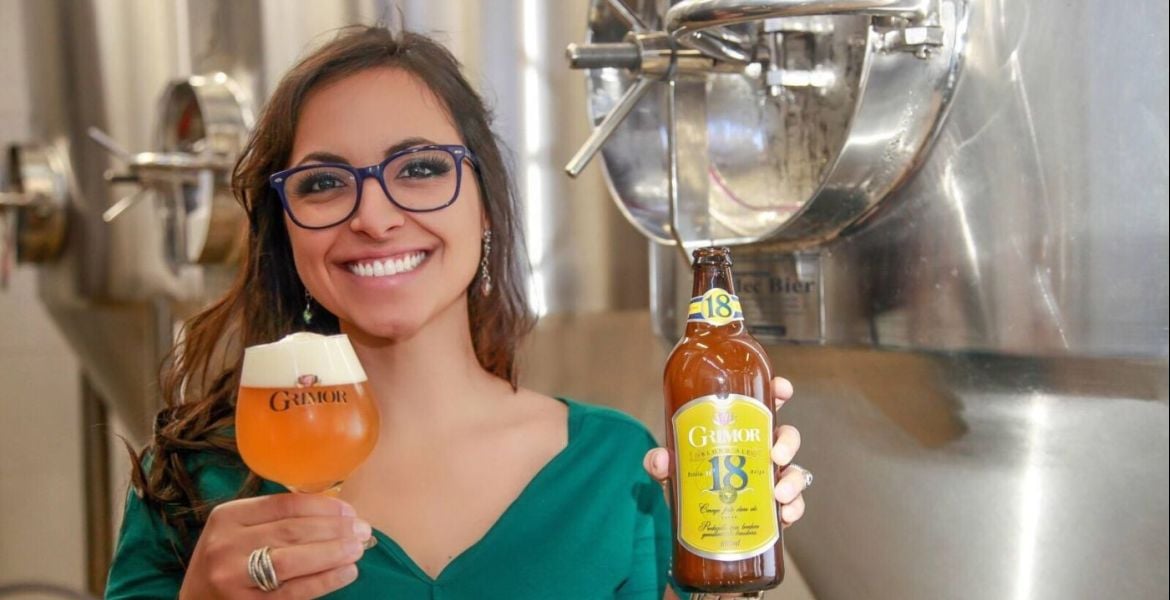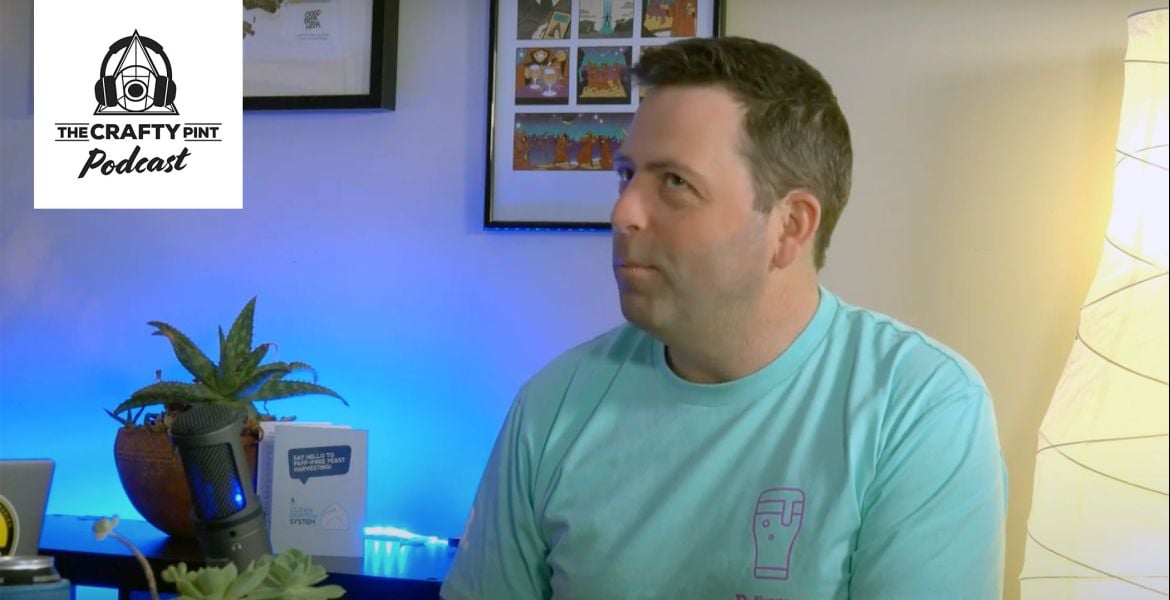The Wild Ones is a series showcasing Australian brewers creating spontaneously fermented ales – beers brought to life by wild yeasts and bacteria in their backyards.
You can learn about the history and concepts behind this form of beer-making in the first article in the series, by Ale of a Time founder Luke Robertson. Here, in the first of the brewer profiles, we head to a farm in Tasmania to catch up with Van Dieman Brewing founder Will Tatchell.
Will Tatchell trained as a brewer in the UK, creating real ales at The Milton Brewery in Cambridge. Prior to that he grew up on a farm south of Launceston, which is where he built a brewery in a shed, launching his first beers in 2009.
Given those formative elements in his life, a couple of things make sense.
Firstly, that the earliest beers to bear the Van Dieman Brewing name were of a traditional bent, based to a large degree upon those with which he learned the trade on the other side of the world. Even to this day – a dozen years on – beers such as his malty (by current standards) Pale Ale make up the bulk of the brewery’s sales and underpin his more adventurous projects.
Secondly, that he was likely to want to take advantage of the family farm and cross-pollinate the line of work he was born into with the one he’d chosen to follow. Indeed, it wasn’t too long before he conceived Hedgerow, an annual release matured on the fruits of the farm – sloes, rose hips and hawthorn berries featured in the series’ 2011 debut, a beer which stirs very fond memories for me.
You could argue that with the tools, acreage and family skills available to him – not to mention Tasmania’s reputation as a producer nonpareil, and the home of Australia’s largest hop grower – it was also likely he’d look to grow some of his own ingredients. Maybe some could have foreseen that, when he did so, he wouldn’t stop at a few rows of hop bines, instead turning over fields to heritage barley varieties.
But if anyone, Will included, thought he’d push beyond that – well beyond that, in fact – into the realms of estate ales (which you can read about here), wild ales, and spontaneous fermentation, then I’d like to take a look at their Lotto numbers for the weekend.
Call into the Tatchell farm at the right time these days and you might even find Will on a tractor, pulling a mobile coolship full of fresh-from-the-brewhouse wort into position between rows of hops. Putting the finishing touches to a batch of 3.8 percent ABV best bitter in the Mother Country this is not.

The origins of Will’s journey into the realms of spontaneous ales, and thus this series of articles, can be traced to September 2015. It was then that he and Stu Grant, now the brewer of Ocho and Miner’s Gold beers, first filled barrels on the farm. The aim was to start creating a “back catalogue” of liquids that could ultimately be used as the basis for, or be blended into, more complex beers than had previously been associated with Van Dieman.
It was two years before the first of those appeared, amid a flurry of six beers at once. Four of them were barrel-aged and two the first Estate Ales, the latter made possible now the homegrown hops and floor-malted barley were ready and could be fermented with a yeast strain, named Everton, they'd isolated from samples captured on the farm.
“Looking back now, it was just a natural progression from the farm side of things,” Will says.
With the first barrel-aged beers and Estate Ales in consumers’ hands, the pair started asking just how far they could go with the tools at their disposal.
“The more we looked into it,” he says, “the deeper we went down that rabbit hole.
“We realised there was a part of the market that wasn’t being catered to, but also that this was a part of brewing that could potentially be lost. It stirred a bit of romanticism or patriotism to make sure it wasn’t lost.”
Thus, he got stuck into research – textbooks, podcasts, picking the brains of brewers working in the field in Belgium and the US – interspersed with a fair amount of “Can I actually do this?” as well as bouncing ideas back and forth with Stu, a good foil as the more analytical brewer of the two.
Once they were ready to roll, they fell back on a piece of equipment that’s helped many a brewer get their start: they modified an old dairy fermenter. It gave them a decent surface area upon which to capture the wild yeasts and bacteria floating around the fields, cooled the wort perfectly, and is still used it to this day.
Proof of concept under their belts, it was a case of seeing how the microflora of the Tatchell farm would translate into beer, then experimenting more and delving deeper.
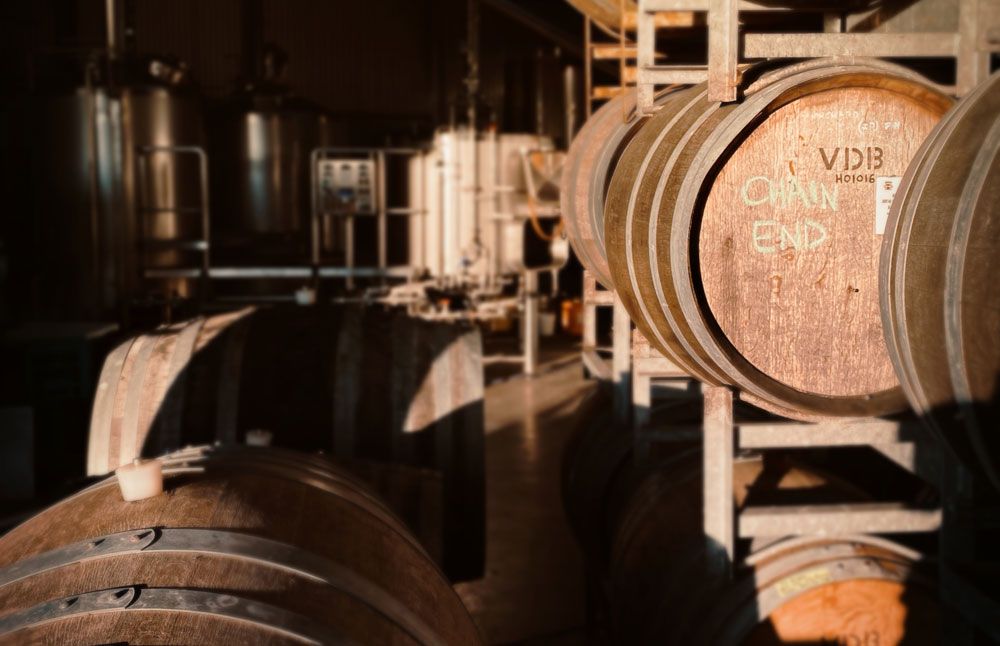
The barrel collection is up to around 110 at time of writing – some at the brewery, the majority in a 19th century brick coachhouse atop a hill on a neighbouring property – of which half are filled with spontaneously fermented liquid.
The majority formerly housed Tassie chardonnay, although a few are ex-pinot noir, a conscious decision guided by the belief they give Will the "cleanest" environment for the beer's flavour and character to take shape. In other words, barrels that act as "harbouring vessels" rather than imparting vinous elements on the finished product.
“The further you go down that rabbit hole, the further you are ignoring modern brewing practices altogether,” Will says. “Casting your eye back further and further to how it would have been done in a previous life: using old barrels as the primary fermentation vessel, or utilising yeasts from blossoms on the farm.”
They’ve since added a second coolship to their setup. One sits in a sealed room, available any time of the year for open fermentation. The other – the aforementioned mobile coolship – has been pulled to different parts of the farm to see if location can contribute to different outcomes.
Last year, it spent a night in the hop field; whether that experiment leads to delicious liquid or not is less the point than the fact it will give them another reference point with which to work. The plan is to leave it overnight in some neighbouring wineries too.
The world, at least within the confines of the radius he can transport his wort in time, really is his oyster.
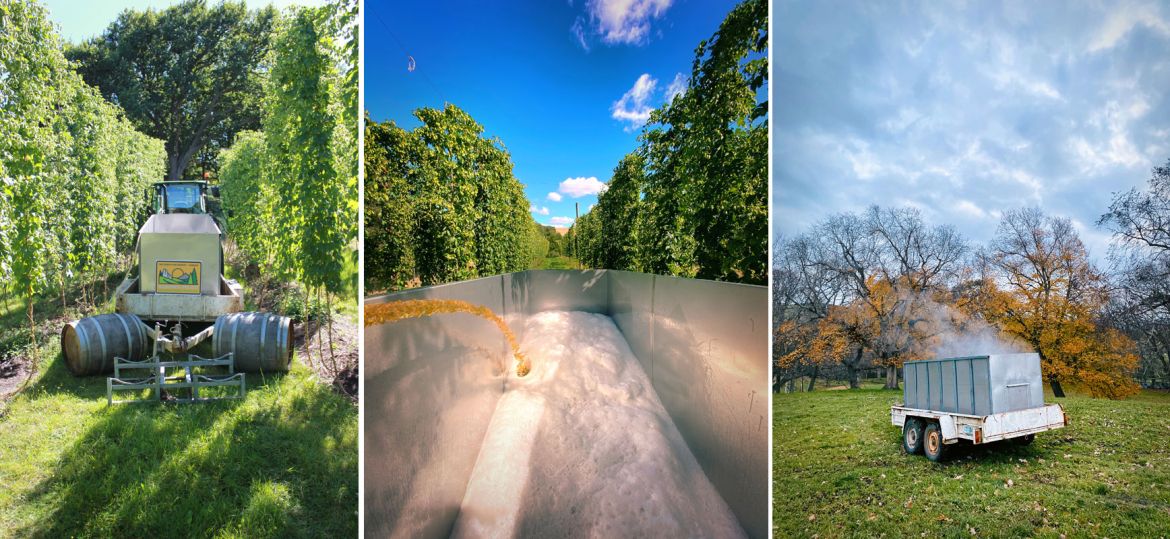
Even leaving the Australian Spontaneous Ales (his preferred term for their lambic style beers) to one side, the Van Dieman portfolio is a pretty broad one these days. Alongside the core range and “normal” limited releases are barrel-aged beers, wild, typically fruited ales, and the Estate Ales featuring ingredients (including yeast and water) 100 percent sourced on the farm.
The last of these are named after his family members and, while brewers often refer to beers as their babies to avoid picking a favourite, in Will’s case his favourite is Max, a lemony-as-you-like saison.
It’s a portfolio with intricacies you could easily be bamboozled by too, not least as the spontaneous ales are, technically, also estate ales. They’re brewed with Van Dieman grown and processed hops, Van Dieman grown and floor-malted barley, and water from the farm’s bores. The point of difference is found at the moment of fermentation.

The farm-sourced Everton yeast is pitched into the Estate Ale series; when it comes to the likes of Long Shadows, Unpredictable Spring, Fence Line and Eagle Tree, it’s nature bringing the liquid to life.
Looking in from the outside, you’d think managing such an empire would require some serious planning – especially on top of his involvement with the IBA, promoting independent Tasmanian beer, and being one of the country’s best proponents of beer social media – but Will admits that went out the window some time ago.
“The only scheduling is decided by what fruits are available,” he says, “and the spontaneous season.”
When it comes to the latter, he’s landed upon “the bridging seasons” of autumn and spring. He’s attempted one in midwinter and one in midsummer “just to see”, but in the case of the former the wort didn’t start fermenting.
As for the midsummer attempt, it looks likely to be chalked up as a learning experience: “It came out after nine months in barrel still incredibly phenolic,” Will says, “and I’m not holding out too much hope for it.”
Indeed, push him as to where his level of knowledge sits and his answer has echoes of the Socratic paradox.
“The short answer is we know nothing,” Will tells me. “At the end of the day, it’s nature’s call.”
As such, he falls back into the comforting arms of the “pillars” they’ve defined when it comes to the creation of such beers, pillars that tell you to accept nature, know things may not turn out as predicted, to accept failure as part of the deal, and to respect time.
“You can’t rush these things,” he says. “It’s a black art.”
His farming background comes in handy when trying to paint a picture too.
“It’s a bit like herding livestock. You can go at them like a bat out of hell and they’ll split six ways. But if you take some time to understand the animals you end up saving yourself time – and it’s much calmer.”
That’s not to say Will is an ingenu. He’s learned how significant an impact climatic and seasonal variations can have, how aiming for replication is naïve given repeating the process in the same place on two consecutive nights can bring different results, and how honesty is key when it comes to telling your story.
“What we do is what we do,” he says. “There’s nothing else to it.”
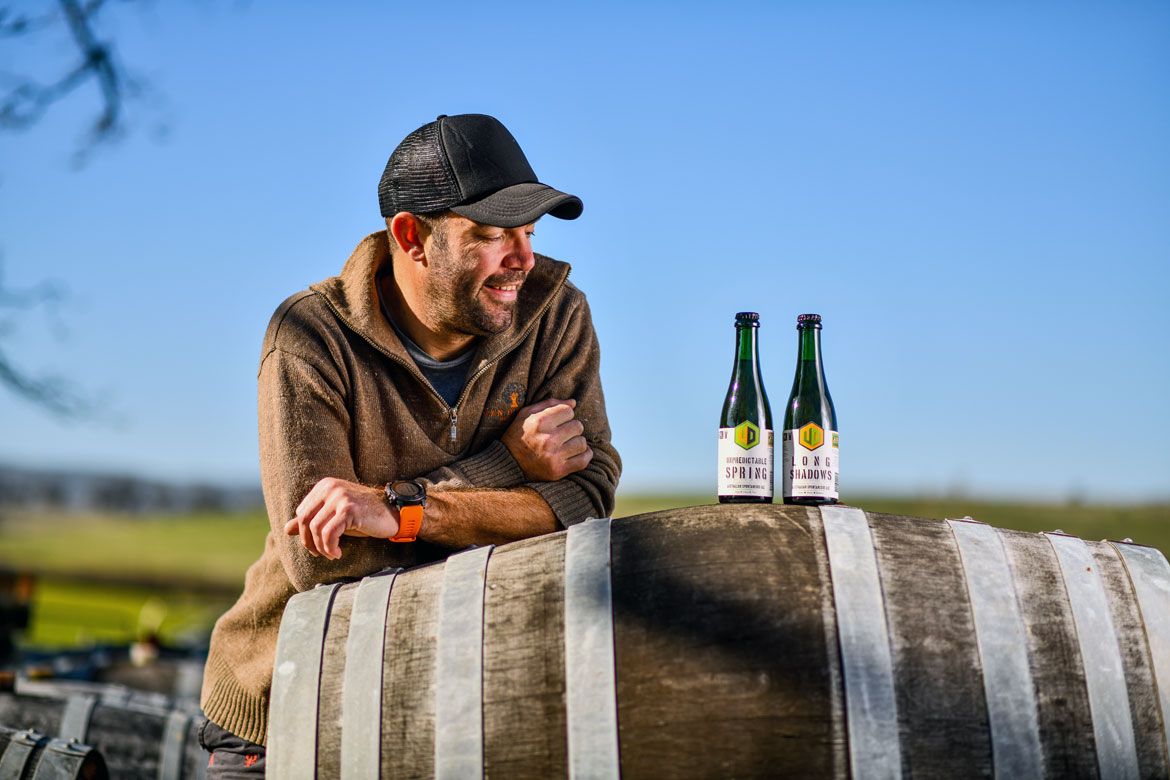
But what of the beers released to date? In my experience, while there are clear distinctions to be found, there are some commonalities between those I’ve tasted, not least a sweet, prickly acidity that seems to gain in intensity within the older blends.
Will says they go through a “multitude” of characteristics over their time in barrels – including some that have become too acetic and have been abandoned. When it comes to the final stages and release, however, the blending process is key.
“It all comes down to what we are after, and how we create layers,” he says, “unless there’s something that’s standalone awesome that we release as a single barrel.”
Often, he picks up a “very distinct Rosella tomato soup” character during the early stages of spontaneous fermentation, one which is “not that nice to drink”, but eventually evolves into something else. Sometimes, fruits or flowers from the family farm, or those nearby, are added to nudge things in new directions too.
“The last thing I want to do is create beers that are one-dimensional,” Will says. “It’s very easy to do that.”
He also acknowledges such beers can be an acquired taste, and that even some fans of lambic style ales won’t like all of his creations, citing one customer he ended up calling after he received an email asking why one beer tasted like salty vinegar.
“It’s pretty rich to suggest these beers are for everyone; they’re not. But there’s something for everyone if you immerse yourself in the concept of these beers,” Will says.
“The best thing is that there aren’t rules or guidelines or stylistic inhibitors to stifle creativity or flavour. It comes back to accepting nature.”
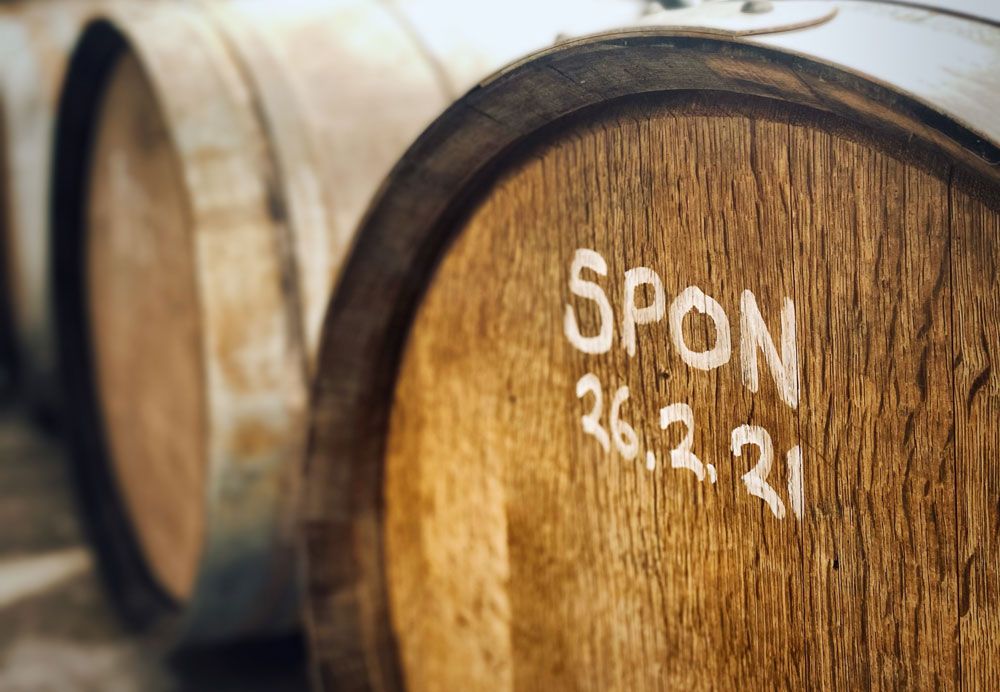
Given the time it can take to bring the spontaneous beers to market, the tiny volumes that often eventuate, the resources that need to be committed to the project, the amount of liquid poured down the drain after sitting in barrels for months or years, and the distances the bottles often have to travel to reach the palates of drinkers just as far down the rabbit hole as Will and his team, you might well want to ask a very simple question: “Why?”
What’s more, such flights of fancy need to be financed by the sale of rather more mundane beers.
“If I won Tatts Lotto, I‘d probably still be doing the same thing,” Will says. “We might not be brewing the core beers as much, but I don’t think I’d be doing that much different.
“We would still be farming. I’ve got a couple of prosciutto drying next door. I’ve got to string hops next week and a lamb to kill tomorrow. All the fruit trees are starting to blossom…
“I have a genuine passion for the art of farmhouse brewing, and we are actually putting it into practice rather than using it as a marketing tool. At the end of the day, it’s incredibly rewarding because we do have full control over the whole process: you nurse it through a whole multitude of processes.”
With some beers, the nursing can last six years if you go right back to the start: seeding the barley in the ground. From there, there’s harvesting the barley, time in the silo before malting, the brew day (or days), ageing in barrels, blending, then further conditioning in bottles.
Certainly, it’s a labour of love, and one a far cry from his earliest days as a brewer. And, when you delve deeper into some of the processes themselves, it becomes even easier to understand the “Why?” – not least the first 24 hours in the life of each spontaneous brew.
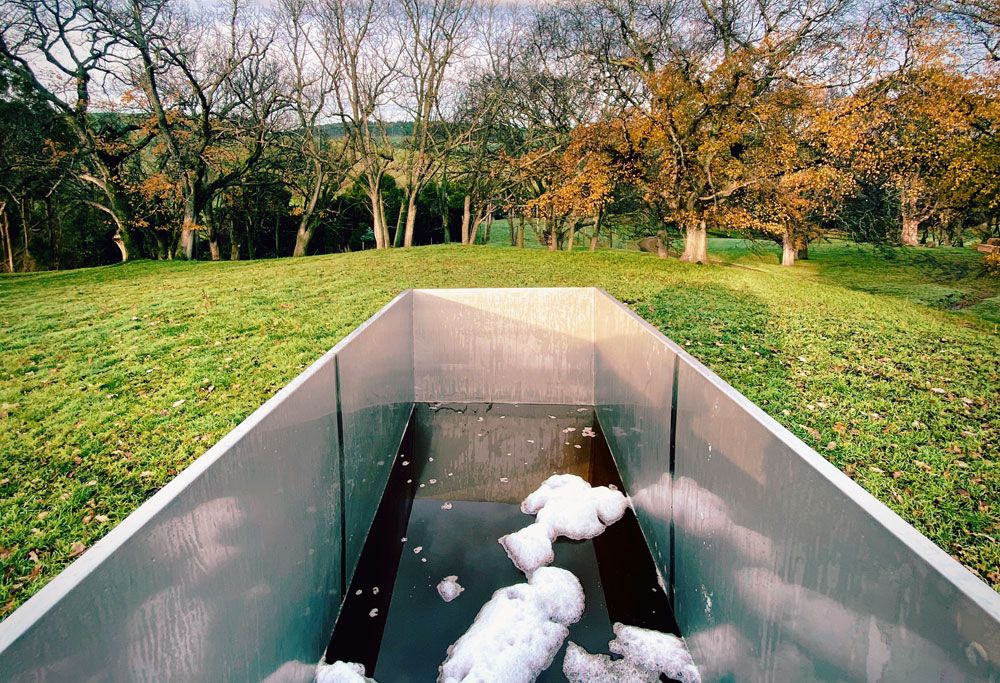
Will aims to have the wort ready by late afternoon / early evening – a thousand litres transferred into the mobile coolship at around 4pm or 5pm. Then it’s hooked up to the tractor on a trailer and hauled to its overnight destination.
It’s a concept that sounds fraught with danger: roads and paths through farms are hardly known for their smooth, level surfaces, but Will assures me they drive very carefully. And given the sides of the vessel are around one metre high – taller than they would like as it can stifle air flow across the surface, but that’s a fix for another day – they only ever lose the odd splash.
The transit from brewery to field helps aerate the wort en route too; once in place, hessian is laid over the top to allow yeasts and bacteria in while keeping insects out.
“Next morning, depending on how cool the night is and what the wind is like, it’s normally chilled to where we can get it into barrels by 9 or 10,” Will says.
“It’s incredible. It starts fermenting visibly by 4pm that afternoon.”
And then it’s a case of waiting, nurturing, hoping, assessing. Van Dieman work on the assumption they’ll have to deal with 20 percent wastage from their barrel program, although Will reckons they’ve dumped less than ten percent to date. That said, he admits to being something of a hoarder; a clean out is overdue.
“I’d have been a great brewer in the Wallonia region 150 years ago,” he suggests of his slowly evolving approach to the art of beer-making. “It’s about respecting nature and respecting time.
“Things will happen out of your control, and sometimes you have to let those things occur. It’s just the way that it happens.”
The Wild Ones continues in November.






